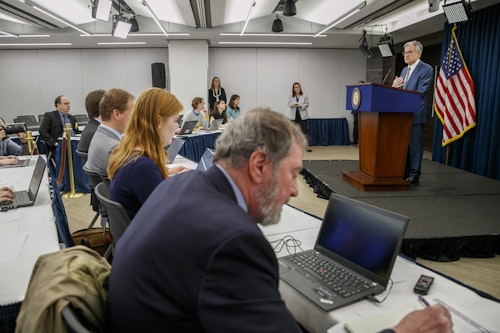No Holds Barred: Initial Responses to the COVID Crisis

Today I am starting a blog on the economic policy responses to this coronavirus (COVID-19) crisis. Having worked through the Global Financial Crisis at Ford Motor Company, I experienced the tremendous power of policy to combat the ferociousness of the damage to workers and to their livelihoods when a recession hits. I started forecasting at the Council of Economic Advisers back when the “new” thing was an IBM AT desktop computer. Since then, I have been through a few recessions and all of them are challenging.
I will chronicle the set of policy actions as best as possible during our journey through this upcoming recession. There is no tiptoeing around this. We will just tell it like it is and deal with it. Recessions are human organisms; there is no algorithm for it. The set of interactions have so much to do with our expectations and how we respond to a host of actions that policymakers, businesses, and other consumers will take. At the very least, as we chronicle the policy actions, we will gather a record of what transpired, and it should offer new insights and perspectives. I did this during the Global Financial Crisis with the help of two incredible economists, Jessica Vila-Goulding and Bradley Pratt. You won’t believe this, but we have a list of all the policy actions globally from 2007 to 2009. It is 35 pages long. Fasten your seatbelt.
Beyond the COVID medical responses, economic policy launched last Sunday, March 15, 2020. As we all began to shelter in place and limit the spread of this virus, policymakers in the United States were coming to grips with how to respond.
It did not take long for our famous first responder, the US Federal Reserve, to launch the first material action. At 5pm ET last Sunday, the Fed issued a statement following their policy committee meeting. They lowered the key policy interest rate, the so-called federal funds rate, by a full percentage point, or 100 basis points, from 1 – 1.25% all the way down to 0 – 0.25%. Lower interest rates help both consumers and businesses with lower costs for credit. On Tuesday morning, March 17th, they initiated a credit facility to help with the commercial paper market. This action is critical for business credit to make payroll and for other short-term financing needs. It helps with how businesses handle payroll and other expenses, so it also helps employees at these businesses. And then Tuesday evening, the Fed initiated the Primary Dealer Credit Facility, another liquidity window for dealers who help the NY Fed implement monetary policy transactions. These dealers help with basic functioning of financial markets. Without this facility, we would see spikes in interest rates, triggering difficulties for people who need to use their credit cards or to benefit from a credit line at a bank. On top of all these measures, the Fed has begun a quasi-quantitative easing program. The Fed began purchasing mortgage-backed securities and US Treasury bonds as a way of stabilizing the bond markets as the turmoil escalated.
Note to Fed policymakers: Don’t stop there! And certainly, they will not. I will keep you posted, but expect a liquidity facility to help the asset-backed securities market and facilities to help small businesses and perhaps a backstop for municipal bonds.
What is the sum of $8.3 billion, $50 billion, $105 billion, plus $1 trillion or more? Yes, that is the federal government fiscal baseball hit out into the park of the economy. Remember two weeks ago when Congress passed the Coronavirus funds of $8.3 billion? In the fiscal vernacular, this is being referred to as Phase 1. And then when the Administration declared a national emergency, that unleashed $50 billion. Congress just passed a bill with $105 billion of fiscal measures – Phase 2 – to include paid sick leave, free COVID testing, expanded family medical leave, an increase in Medicaid spending, and more money for food stamps and other food-related programs.
The Phase 3 bill – upwards of $1 trillion as of this morning – is also needed quickly. Any recession antidote must be big, fast, and convincing. If it falls short on any of these, the recession can linger longer and cause more damage. The key is to get businesses to keep people on their payrolls, not to start the process of throwing people out of work. That is why this Phase 3 bill must get checks out to people quickly, to help small businesses with financial support so they don’t have to lay off workers. The message Congress and the Administration have to issue is: Don’t put people out of work, and we are coming to help you make payroll during this time when your customers are sheltering in place.
We should get more clarity on the Phase 3 package today. Many features being discussed are industry support for those impacted directly like airlines and hotels, direct cash payments to households, small business loans, and deferment of business and individual tax payments. I will come back to Phase 3 package details as we get them. Each day we wait to plug the holes of a recession leads to a host of actions that ultimately cause more people to lose their jobs.
Subscribe
Get updates whenever new content is added. We'll never share your email with anyone.

